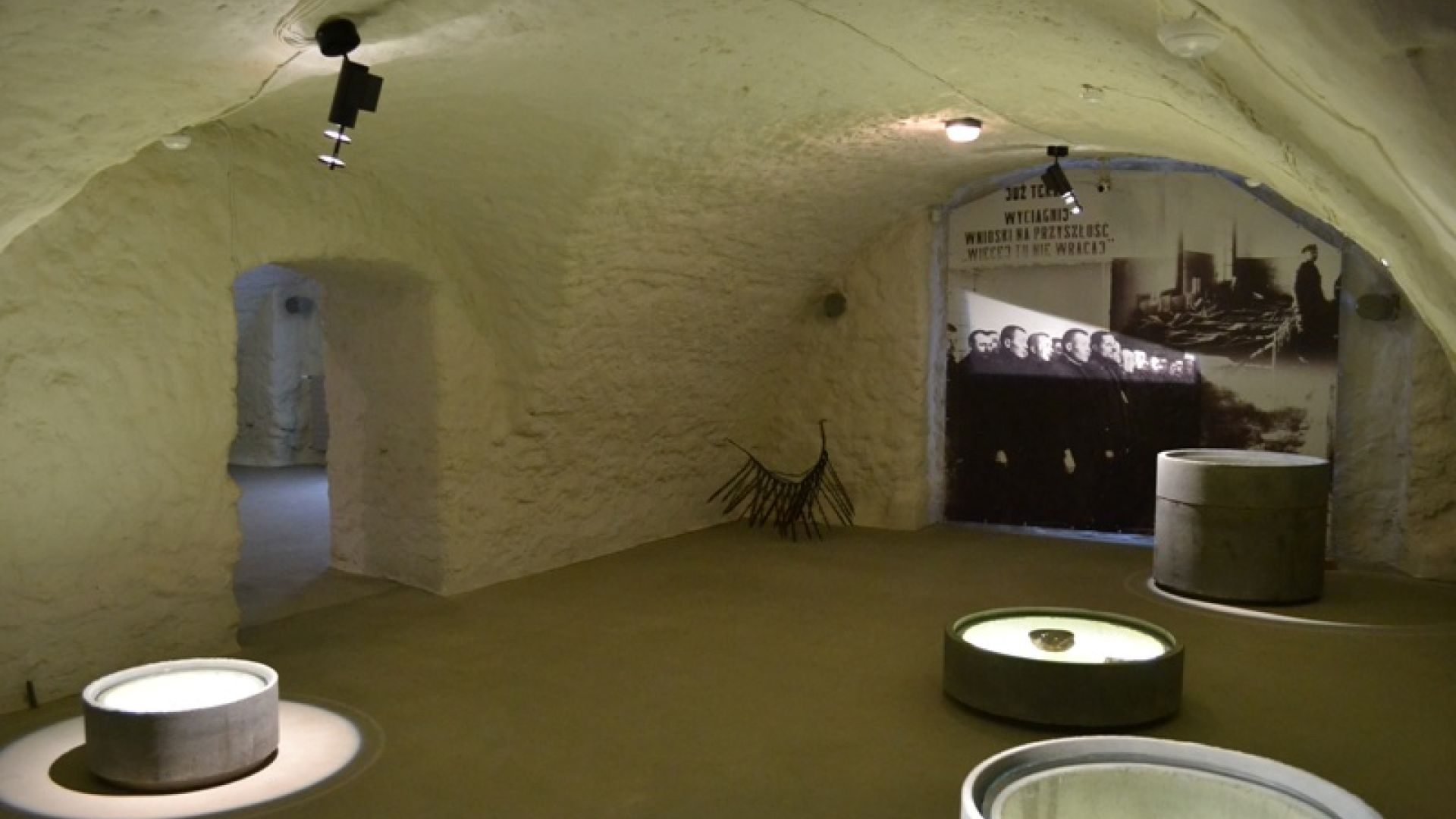The Centre of Patriotic and Civic Reflection came into existence in the building of old prison in Kielce. It is a place where citizens of Kielce and Świętokrzyskie region could learn about their ancestors’ patriotic and civic achievements. The concept of the exhibition was developed by Mirosław Nizio – the author of the exhibition in The Warsaw Rising Museum.
The exhibition was arranged like a nineteenth-century library. Perfectly integrated into the library space Multimedia encouragesto an active meeting with history of Polishnation from the Kościuszko Insurrection to the end of world war I and the presented copies of art works, pieces of poetry and recordings make visiting the exhibition an unique experience. A walk into past starts with the meeting with Tadeusz Kościuszko who was the first to animate his countrymen to fight for independence of their Land. Kościuszko commanded Polish forces during the victorious battle of Racławice. This victory gave Polish people hope for freedom. At the exhibition you can enjoy the interactive reproduction of Panorama of the Battle of Racławice by Wojciech Kossak and Jan Styka. Going forward, visitors learn about Polish uprisings against the invaders. The exhibition formed by monitors and touch screens contains information about November and January Uprisings. Reproductions of clothes and uniforms, maps and writings take us to reality of 19th century enslaved homeland. Visitors meet writers, leaders, politicians and „ordinary” people (associated with Kielce region) who were not reconciled with the loss of independence. A special place among them belonged to Stanisław Staszic and Stefan Żeromski. Their activity and work reinforced citizens’ sense of community and national pride that they are Poles. Thanks to the organic work of many Polish patriots Józef Piłsudski could form the First Cadre Company which won an independent homeland. A big part of the exhibition is devoted to the Marshal. You can hear the unique voice recordings, watch videos and photos, reproductions of legion uniforms, weapons documents and newspapers.
World war II
The exhibition devoted to world war II allows visitors to learn about the September Campaign, the Polish armed forces fighting on all fronts and the Polish Underground State. Exposure except traditional exhibits: maps, weapons, uniforms and equipment of Polish soldiers also presents authentic films and sound recordings. Combatants’ relations, comments and partisan commanders’ memories, especially operating in Kielce, are an invaluable document of Polish heroism in fight with the enemy.
Communist Poland
The People’s Republic of Poland exhibition presents the history of Poland after II world war when Polish country again lost the sovereignty. The exhibits remind formation of subordinated to USSR Communist power. The exhibition also recalls the brutal methods and propaganda slogans that accompanied the implementation of the socialist ideas. It shows Polish protests against Sovietisation of the country which lasted nearly 50 years to 1989 when finally Communism was defeated. Everyday objects, video and voice recordings collected in this gallery help to understand and interpret the period of totalitarian rule in Poland.
Kielce prison
The exhibition in the cellar refers to the cruel function of the building. Preserved original, narrow cells, objects and documents recall that for over one hundred and fifty years apart from ordinary criminals, political prisoners were convicted- beaten and tortured. Sound and lights bring closer visitors to inhuman conditions in which the people were imprisoned. First, the enemies of a Russian Tsar - January Uprising participants, later during the Nazi German occupation - Polish soldiers and eventually tortured by Security Office officers opponents of the Communist power. The water cell located under the stairs shows the cruelty of Security Office. The exhibition also recalls that in the cellar prisoners were executed by hanging. To this day a preserved hook remembers the times of Tsars and an important document containing the minutes of the execution reminds Communist terror.
Opening hours:
Tuesday - Sunday: 10.00 - 17.00
Monday: closed
Tickets:
Full 5 PLN
Reduced 2 PLN
Family 9 PLN
Group (up to 15 persons) 2 PLN
